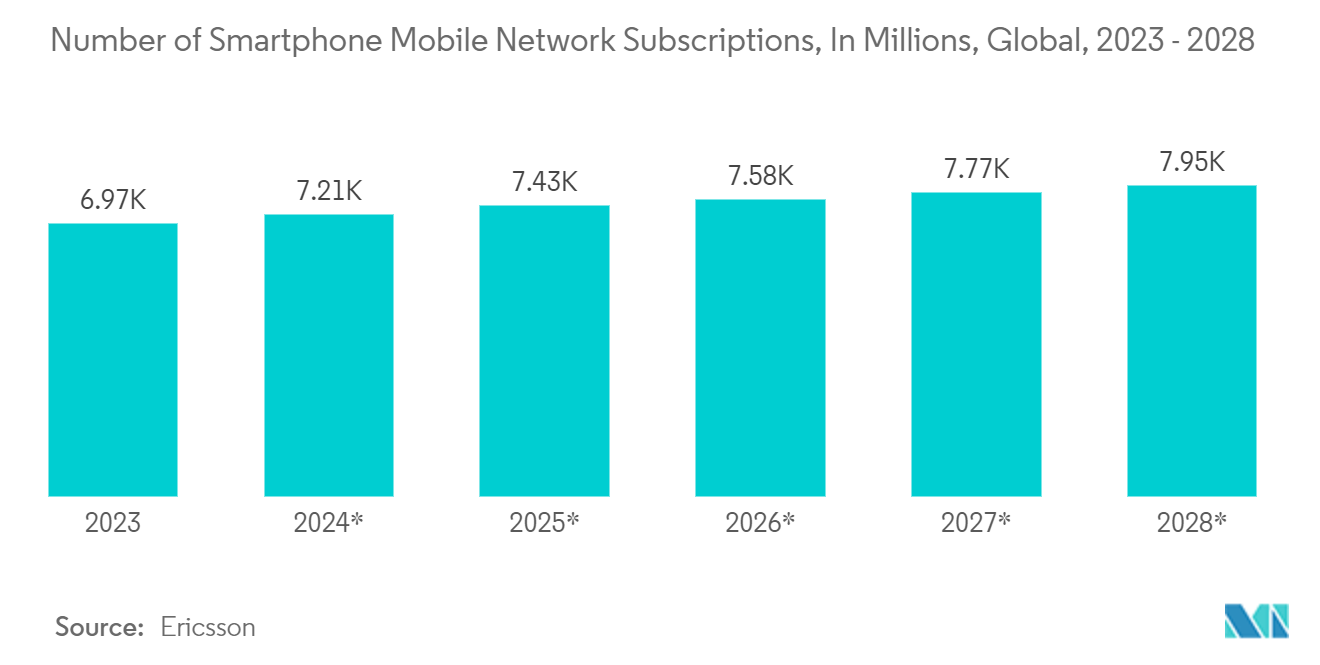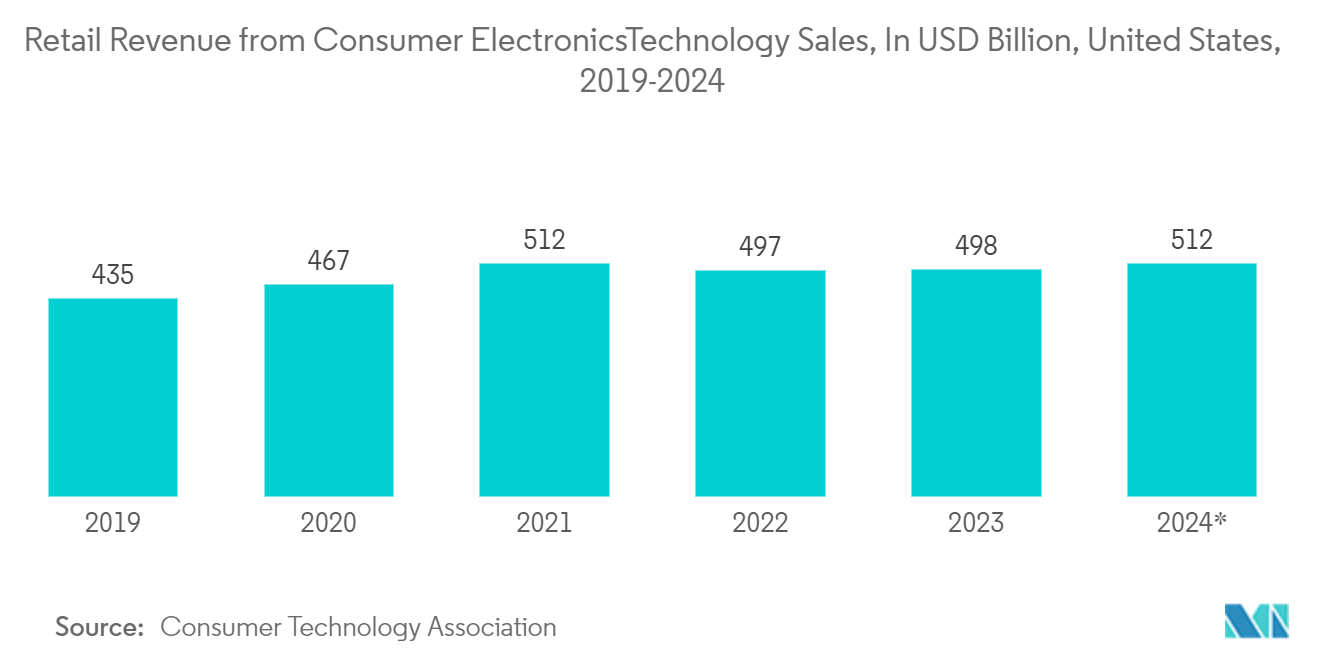Market Trends of Consumer Analog Integrated Circuits Industry
General-purpose ICs Expected to Witness Significant Growth
- The rising penetration of smartphones, tablets, and other consumer electronics devices is a significant driver for general-purpose analog ICs. These devices require various analog components for functions such as audio amplification, signal conversion, and power management, leading to increased demand for general-purpose ICs across the consumer electronics sector.
- Smartphones have become an irreplaceable commodity as every task in some way or another is related to these devices. These smartphones are becoming more powerful each day to cater to increasing dependency. Consumers use a variety of applications that use different sensors and processing power from these devices. All these processes require a power source to operate, which is a battery in the case of mobile devices.
- These batteries must be charged from time to time to keep the processes up and running. Hence, longer battery life is another important criterion when selecting a smartphone. Technology related to battery-life optimization has not developed at the same pace as other verticals in the smartphone industry. Designing efficient power management units and power-efficient integrated circuits is a feasible solution. Studies have revealed that internet usage constitutes about 62% of the power consumption in an idle state. Moreover, 3G/4G consumes more battery than Wi-Fi when small packets of data are exchanged frequently.
- PMICs enable the 5G revolution and optimize power efficiency for advanced mobile experiences. The widespread adoption of 5G connectivity and the increasing demand for highly efficient power management solutions boost the need for PMICs. With the introduction of 5G technology, smartphones demand smarter and more efficient power management ICs to meet their intricate power requirements.
- Ericsson reports that global smartphone mobile network subscriptions nearly reached seven billion in 2023, with expectations to surpass 7.7 billion by 2028. China, India, and the United States lead in the number of smartphone mobile network subscriptions.

United States Expected to Hold Largest Market Share
- The United States holds a prominent position in the semiconductor industry and houses numerous primary analog IC manufacturers. This region commands a substantial market share owing to the widespread use of advanced electronic devices, the presence of leading technology firms, and the need for energy-efficient solutions across diverse industries. As per SIA, American semiconductor companies lead the global industry in chip design, with the United States contributing over 45% of the worldwide design workforce. Such capabilities are expected to create several opportunities for the market studied.
- The expanding consumer electronics industry in the region significantly drives market growth. Furthermore, emerging technologies like the Internet of Things (IoT) have spurred a new wave of innovation in the semiconductor industry. An increasing number of electronic devices, ranging from laptops to thermostats, are becoming connected each year in the region, allowing for more sophisticated communication and coordination between them and their users.
- The incorporation of health and fitness tracking features, such as sleep tracking, heart rate monitoring, and step counting, has appealed to health-conscious consumers, driving the adoption of this technology. The use of smartwatches aids in sharing health data with professionals and alerting emergency services in times of need because of an increase in the home healthcare approach among consumers.
- As per the Consumer Technology Association, based on the projected retail sales for 2024, consumer electronics retail sales in the United States will reach USD 512 billion. OLED TVs are forecast to generate USD 2.3 billion in revenue in 2023.


